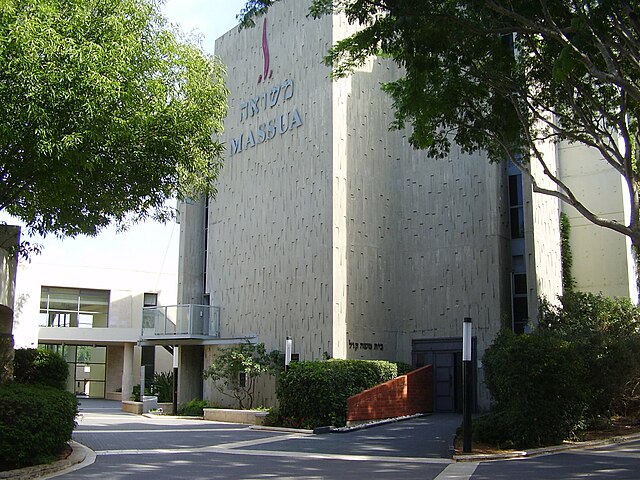Top Qs
Timeline
Chat
Perspective
Tel Yitzhak
Kibbutz in central Israel From Wikipedia, the free encyclopedia
Remove ads
Tel Yitzhak (Hebrew: תֵּל יִצְחָק, lit. 'Yitzhak Hill') is a kibbutz in central Israel. Located in the coastal plain to the south-east of Netanya, it falls under the jurisdiction of Hof HaSharon Regional Council. In 2023 it had a population of 1,005.[1]
This article may incorporate text from a large language model. (September 2025) |
Remove ads
History
Summarize
Perspective
The region of Tel Yitzhak, bordering the wetlands of the Poleg stream, has been inhabited intermittently since the Middle Paleolithic age, with peak periods of settlement during the Middle and Late Bronze Age (17th–13th centuries BCE), the Byzantine (4th–7th centuries CE) and Late Ottoman periods (19–early 20th centuries CE).[2] Before the 20th century the area formed part of the Forest of Sharon and was part of the lands of the village of Ghabat Kafr Sur. It was an open woodland dominated by Mount Tabor Oak, which extended from Kfar Yona in the north to Ra'anana in the south. The local Arab inhabitants traditionally used the area for pasture, firewood and intermittent cultivation. The intensification of settlement and agriculture in the coastal plain during the 19th century led to deforestation and subsequent environmental degradation.[3]
The kibbutz was established in 1938 by General Zionist immigrants[4] from Galicia as part of the tower and stockade settlement campaign. It was named after Yitzhak Steiger, a leader of HaNoar HaTzioni in Galicia.
During the 1936–1939 Arab revolt in Palestine, the area was one of several sites selected by the Jewish National Fund for rapid fortified settlement in order to establish a Jewish presence in the Sharon plain and protect nearby roads.[5] The first pioneers combined agriculture with defense duties, and for several years the kibbutz maintained a watchtower and stockade enclosure.
In the 1940s Tel Yitzhak hosted one of the printing presses of the newspaper Haaretz.[6] After the establishment of the State of Israel, it developed mixed farming, including citrus orchards, poultry, and dairy production.[7]
Masua (Massuah), a center for Holocaust research, commemoration, and youth education, was established on the kibbutz in the 1970s and later became an official institution supported by the Israeli Ministry of Education.[8] It serves as a major Holocaust education center for school groups and soldiers.
Remove ads
Economy and culture
Like many kibbutzim, Tel Yitzhak underwent processes of privatization from the 1990s onward, introducing differential wages and leasing agricultural land to private farmers.[9] Today its economy combines agriculture, light industry, and services, while also hosting cultural and educational programs connected with Masua.
Nature reserve
Southwest of the kibbutz is an 8-dunam nature reserve established in 1968[10] to protect flora and fauna native to the Sharon plain.[11] Flora includes Ceratonia siliqua, Calicotome villosa, Thymelaea hirsuta, Prasium majus, Anagyris, and Lavandula stoechas. The reserve preserves remnants of the once extensive oak woodlands of the Sharon.
Historic images
- Tel Yitzhak construction of watchtower 1938
- Tel Yitzhak construction of wall, July 1938
- Tel Yitzhak 1939
- Tel Yitzhak 1944 1:20,000 (bottom right quadrant: Tel Yitzhak)
References
Wikiwand - on
Seamless Wikipedia browsing. On steroids.
Remove ads






